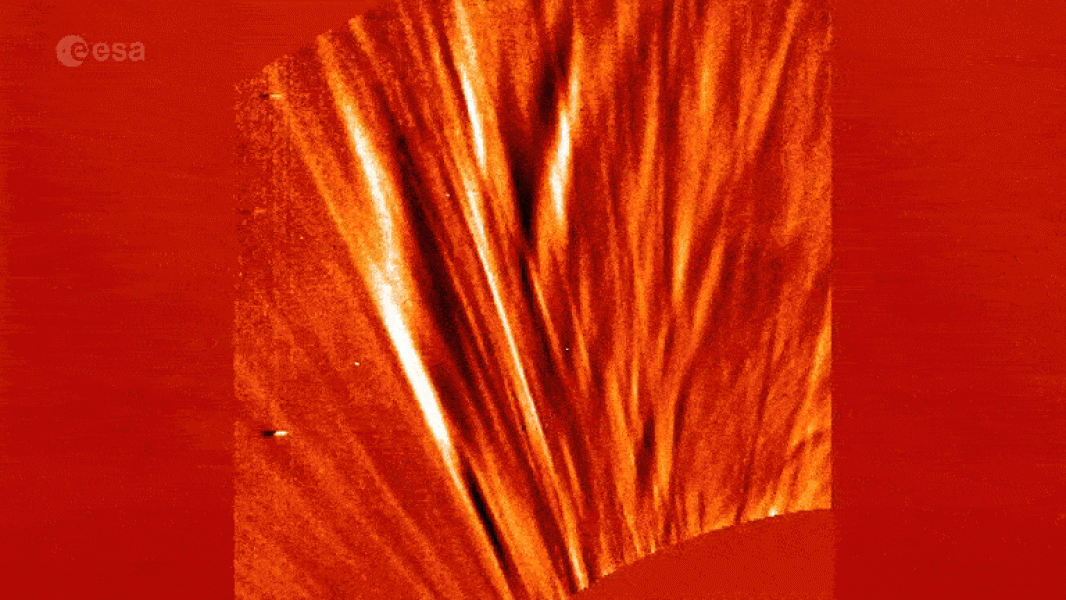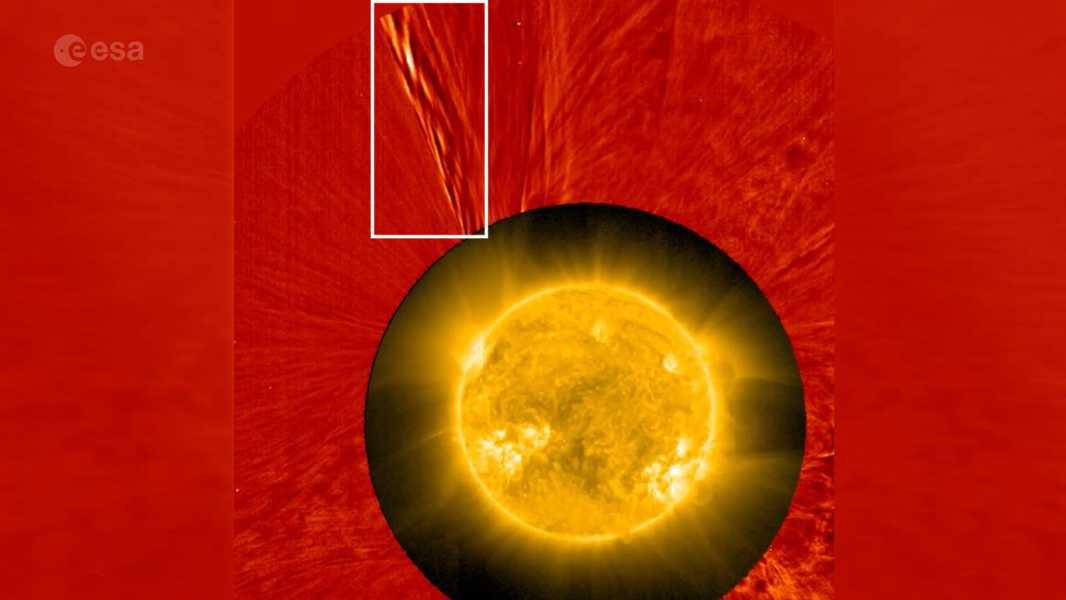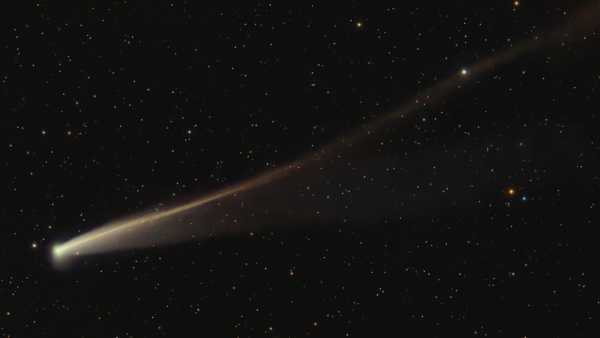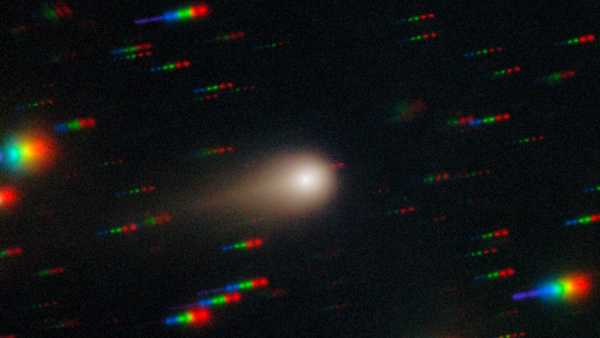
A newly released video shows a huge stream of spiral solar wind blasting out from the Sun in 2022. The time-lapse footage also reveals strange dark lines reminiscent of a UFO. (Image credit: ESA & NASA/Solar Orbiter/Metis & EUI Teams, V. Andretta and P. Romano/INAF)
A newly released video shows a spectacular solar stream rising above the sun in an unusual “cyclone” configuration caused by a powerful solar explosion. The stunning footage also captures mysterious lines crisscrossing the fiery scene, like pixelated UFOs, but they are actually distant stars.
The video, released on March 26 by the European Space Agency (ESA), is a time-lapse recording taken over eight hours on October 12, 2022, by ESA's Solar Orbiter. The spacecraft captured the scene by obscuring the Sun's main disk, allowing the probe's camera to focus on the extremely faint light emitted by the stream of ultra-fast charged particles, or solar wind, that streams almost continuously from our star.
ESA officials said in a statement that this was the first time solar wind had been observed “being pushed out from the Sun in a swirling, swirling motion.” “Solar wind particles spiral outward, as if caught in a cyclone that extends millions of kilometers from the Sun.”
The stunning video also shows about a dozen perfectly straight, half-dark, half-bright lines moving across the screen, like UFOs and aliens from arcade games like Space Invaders.
ESA officials explained that the objects are actually stars moving in the background as the orbiter orbits the Sun, made visible by editing technology used to create the video.
Watch the wind swirl around the sun – YouTube

Watch the solar “pseudostreamer”
In a new study published March 26 in The Astrophysical Journal, the researchers described the giant solar corkscrew as a “large pseudostreamer” that formed near the sun’s north pole as a result of a solar flare that released a cloud of plasma, or coronal mass ejection (CME), into space. The pseudostreamer spanned 1.5 times the width of the sun and lasted for about three hours.
The “spiral” structure of the wind flow is likely the result of Alfvén oscillations, caused by waves of ions that oscillate in response to magnetic field disturbances that occur during the flare, the researchers wrote. They noted that the unique shape may also be due to the streamer's location near one of the sun's polar regions, where magnetic fields are typically much stronger than near the sun's equator.
The Sun is currently at the peak of its roughly 11-year activity cycle known as solar maximum, which officially began in early 2024. During this phase, powerful solar flares occur more frequently on the Sun and the solar wind increases. However, this video was taken before the solar activity began to increase, surprising scientists.

The pseudo-stream emanated from a region near the Sun's north pole, which may have played a role in its formation.
Sourse: www.livescience.com





